This project introduced us to how to be a phenomenal graphics artist. I have learned how to take an idea, find inspiration and create samples to create a finished art piece. I’ve learned how different shapes and lines can produce different outlooks, drastically changing ones emotion to the image itself. I’ve also learned how to change composition and look deeper into inspiration to find something beyond that of what I thought I was looking at. Project 1 definitely prepares you to have a solid ground of how to work as a Graphics Design artist.
Category: COMD1100 Project #1 (Page 2 of 6)

This flame image of a postal sticker with a design on it caught my eye not only because of it’s color but the placement. It’s bright colors stand out clearly on this black ground area producing a very stable figure and focused point of view being that the main image we see is directly towards the red flaming postal sticker. It’s smooth lines create a very organic shape. I believe the artist of this piece believed the placement to be very pleasing and clearly put their work on the spotlight, maybe they wanted everyone to see the work they produced and felt the ground for this was perfect since other colors might distract from the piece at hand and I definitely agree.

The flower image not only is natures art but has it’s own distinct lines and organic figure that has no replication. The stable image in the flower would have to be the peak of green that the eye undoubtedly is drawn to. I believe each flower has a stable figure and creates it’s own beauty in itself. Thats exactly what this little one did when it sprouted and created art. The stable green against the ground of red makes for a very intriguing color coordination especially since the green also can be made out to look like a sort of insect with the shading underneath it.
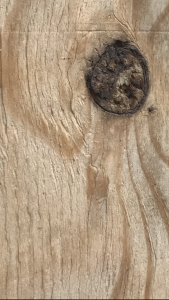
Plank of wood with a dark wooden spot, the spot being a very stable figure in a ground of lighter wood surrounding it. Other wooden brown lines connect to the darker circle, was it man made? Was it grown and cut but born with that design? Many questions come up but still that dark brown circle stands out the most while it’s textural design speaks very subtle. The balance between the two make for a very outspoken picture with many meanings and points of views to whoever can describe the work of nature. I see the lines and shapes as very organic with the dark circle almost being a geometric perfect circle! The wood was definitely man made, maybe by construction workers who are still questioning what to do with the plank. but even with the man made cut the design of the tree never leaves.

Paint splatter on wall, very organic shapes with no geometric shapes in them whatsoever. It is very ambiguous with no focal point to draw into. The ground is a mixture of dark and light shades. Very minor stable relationship in the corner of the image.This scene was possibly made with a bucket of paint being tossed on the wall and as the wall collects the different splats of paint create, it creates this design seen on this image. I believe it dried up very quickly because theres no drawn down lines of paint dripping downward making for a very interesting and unique type of splat.

The ground full of cement rocks makes for a very ambiguous image. No main focus point but a lot of sharp lines and rocky, strong kind of feel coming from the image. Sturdy, rigid, elite is what I get when I see this image. Organic shapes indeed. The ground is all rocky but probably man made street cement crushed into bits and pieces of it’s former mold. I believe that workers made a piece of sidewalk using cement then decided they would need a different variation of said sidewalk and started the recreation process by destroying to build a new. That is when all the crumbles of rocks/cement gets together to form this image.
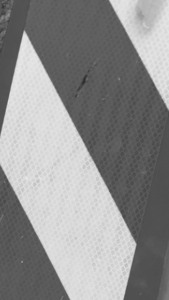
This warning sign left alone on the sidewalk has a very ambiguous feel to it. No main focus but a lot of geometric shapes in this figure. Darker and lighter rhombuses with smaller squares embedded on the inside. I believe that in this image because of the ambiguity, the geometric shapes are more prominent and tightened to be the main view of the image. Presumably it might have gotten there because a group of kids thought it’d be fun to hold the sign and toss it around then got bored and left it there on its own. It was a singular sign not around anything that particularly needed a sign so i’m assuming it was moved from its line of work for fun then left on its own.
Hours worked: 4+
During my duration for Project #1, I had understand the difference between Obvious and Ambiguous drawings. I also created 2 published drawings using white and black colors to display the simplicity of both obvious and ambiguous drawings. Before I publish my final drawings, I created thumbnail drawings or sketches to plan our ideas before creating the project. I had done at least 12 sketches and then finalized with 2 drawings to describe obvious and ambiguous artworks. Overall, I enjoyed this project and took about 6 hours from planning with thumbnails to publishing my final artwork.
From this project, I’ve refined my skill to pay attention to little details and see things in a different manner using new vocabulary. My experience working on this project has shown me the work standard in the creative field; meeting deadlines, showing progress and the steps taken to present the progress, and patience. From the beginning process in phases 1 & 2, the idea of brainstorming and doodling/sketching is heavily enforced; one must plan a rough draft before proceeding to the next phase of the project. In the developing phase—phase 3—the work is finally created, and presented, in a clean and organized manner, which we learned how to do with every little detail of the process; I would consider the develop phase as the presentation phase, as well.
From my experience working on this project, I’ve learned the differences between ambiguous and stable figure/ground relationships in everything we see. In my project, I feel like I could’ve been more patient with the inking process and utilize a protective garment to prevent my canvas from collecting finger smudges from leaning my hand on the wet ink. Another part of the project I would’ve improved on is keeping up with deadlines.
Links: PHASE 1 – Discover, PHASE 2 – Define, PHASE 3 – Develop
This project has helped me learn new levels of obvious and ambiguous figure/ground relationships, it has also taught me how to properly structure a project, from pictures to sketches to final presentation. Developing this project into four phases helped me perfect my final sketch into what I truly wanted it to be, by practicing my sketches in my thumbnail while perfecting my mistakes as I go.
Even though a good a majority of this project was a challenge, it will help me for my future projects and so on. It was hard taking a sketched thumbnail and reforming it into my final draft when I first started to outline. Next time I’ll make more than one rough draft before starting my final draft. Dealing with obvious and figure ground relationships also helped me discover new methods for arranging my composition.
After completing this project I have learned new principles and techniques to use for my next project. I’ve also learned to handle my time wisely with my compositions by making rough drafts to fix mistakes and to scale my drawings to make sure my final composition is a flawless as possible.
During this project I learned to see the world with a different perspective and notice things I would sometimes never notice. I learned that the world is full of obvious and ambiguous figure/ ground relationships and that it is very fun to try and figure out what they are and where. Taking the project phase by phase and getting critiques through each phase as well as giving them out really helps the artist improve their work.
There where times in this project I had a difficult time and that was relating my pictures to each other. Although once I got the hang of it I was able to create my work without worries of how they related to each other. I learned that by modifying a figure you can change the mood it gives out. For example a geometric figure would give out more of a sharp and striking feeling while an organic figure would give out a more bubbly relaxed type of feeling to its viewer even if it where the same figure.
In my next project I believe I could improve my work by broadening my imagination and not think to realistic, but see meaning in things outside my perspective by trying out many different things and using a different perspective to look at things around me.
On my 2nd phase of the project, I chose 2 sketches that resembled my theme the most. My theme; “Define rubbish and today’s society”. I felt that the ambiguous sidewalk represented today’s society best because, nobody cares about a sidewalk and that’s why you see gum all over it. But then you realize that sidewalks are one of the most important road constructions in today’s “Society”. And for the trashed “Coke” cup. It shows all of the rubbish you see on the street in today’s “Society”.
- Total Time: 1hr 30min
- Total Time: 1hr
After completing project 1: Urban Artifacts I can gladly say that I’ve actually learned quite a few things that I wouldn’t have know otherwise. From phase 1 to phase 3 I learned new things each phase. When it came to taking the pictures that we would eventually use to create our final inked compositions I found my self getting more creative with the angels than I normally would have in the past I often found myself stopping and think hmmm I wonder what would happen if I take it from this angle while in this position and it was thinking like that, that helped me get some really great shots. Another thing learned from this project was to really sit down and redraw and refine till I had something that I was pleased with.
overall I felt as if my creativity has been further expanded upon due to this project and I hope to bring over what I learnt from this project to the next and do an even better job.
https://openlab.citytech.cuny.edu/spevackcomd1100fa2017/2017/09/04/urban-artifacts-phase-1-3/
https://openlab.citytech.cuny.edu/spevackcomd1100fa2017/2017/09/13/urban-artifacts-phase-2-3/
https://openlab.citytech.cuny.edu/spevackcomd1100fa2017/2017/09/14/urban-artifacts-phase-3/
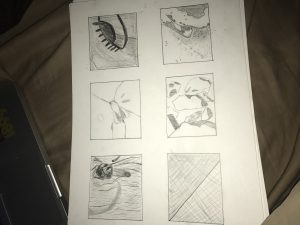
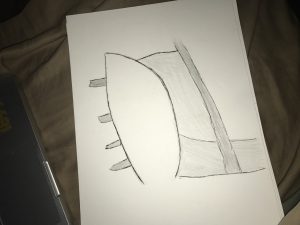
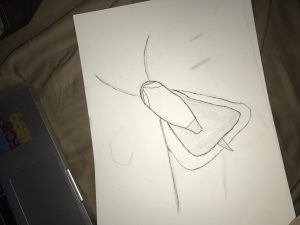
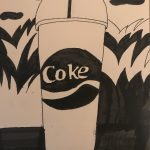

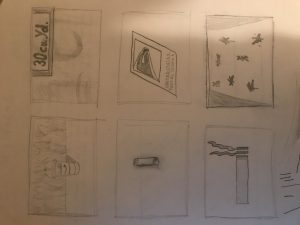



Recent Comments